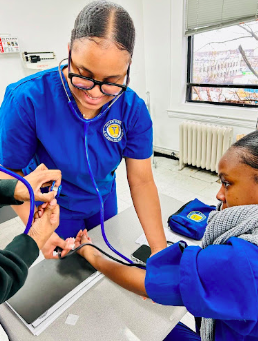
As a Medical Assistant, understanding vital signs is an essential part of your role. Vital signs are measurements of basic physiological functions that indicate the overall health and well-being of a patient. The four main vital signs are:
1. Temperature: Temperature is a measurement of the body’s internal heat. It is typically measured using a thermometer and is expressed in degrees Fahrenheit or Celsius. Normal body temperature ranges from 97.8°F to 99°F (36.5°C to 37.2°C). Abnormal temperatures can indicate fever or hypothermia.
2. Pulse: Pulse refers to the rhythmic throbbing of the arteries as blood is pumped through the body. It is commonly measured at the radial artery (wrist) or carotid artery (neck). The pulse rate is measured in beats per minute (BPM). The normal pulse rate for adults is between 60 and 100 BPM. Abnormal pulse rates can indicate various conditions such as tachycardia (fast heart rate) or bradycardia (slow heart rate).
3. Blood Pressure: Blood pressure is a measurement of the force exerted by blood against the walls of the arteries. It is measured using a sphygmomanometer and expressed in millimeters of mercury (mmHg). Blood pressure is recorded as two numbers: systolic pressure over diastolic pressure. The normal blood pressure for adults is around 120/80 mmHg. Abnormal blood pressure readings can indicate hypertension (high blood pressure) or hypotension (low blood pressure).
4. Respiratory Rate: Respiratory rate refers to the number of breaths a person takes per minute. Measured by observing the rise and fall of the chest or by listening to breath sounds. The normal respiratory rate for adults is between 12 and 20 breaths per minute. Abnormal respiratory rates can indicate respiratory distress or other respiratory conditions.
In addition to these four vital signs, some medical settings may also include other measurements such as oxygen saturation (SpO2), which measures the amount of oxygen in the blood, and pain assessment using a pain scale.
As a Medical Assistant, you will be responsible for accurately measuring and recording vital signs, as well as recognizing and reporting any abnormal readings to the healthcare provider. You may also be involved in explaining the significance of vital signs to patients and assisting with any necessary interventions or treatments based on the findings. The Allen School of Health Sciences Medical Assistant program is a blended program of online and hands- on interaction in a clinical classroom setting. You will learn vital signs, phlebotomy, EKG, and so much more. Find out more about the Medical Assistant career field by contacting the Allen School of Health Sciences today! www.allenschool.edu
